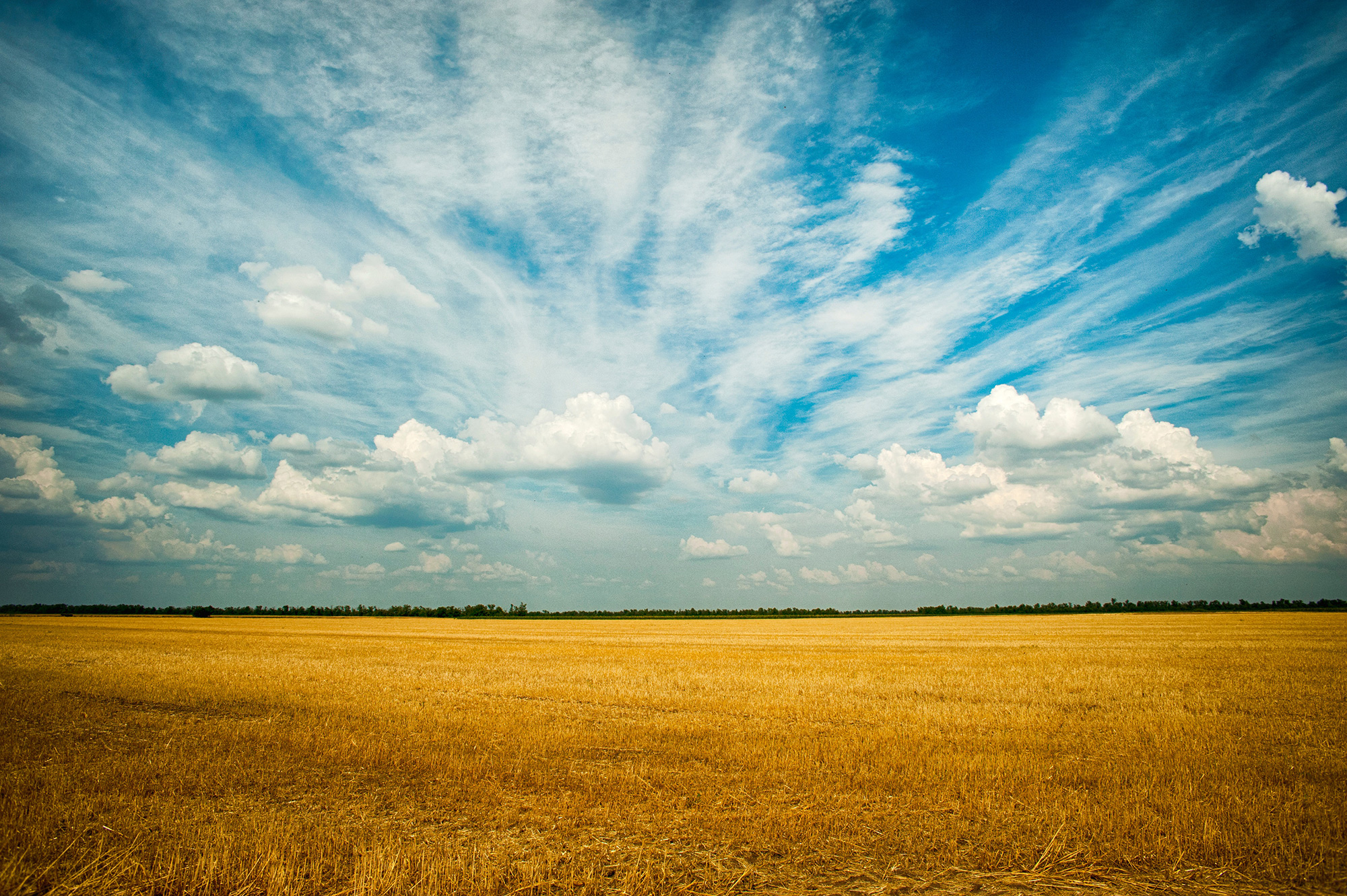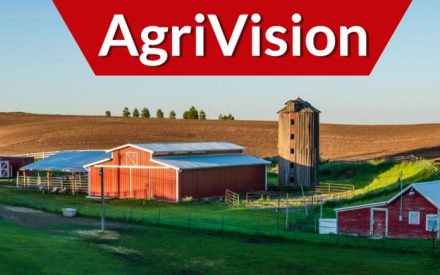Host Katie Wantoch and Bill Halfman, Professor and Extension Agriculture Agent in Monroe County, discuss solutions for a farmer that is looking to avoid purchasing higher priced feeds.
View Transcript
Katie Wantoch
This is UW Extension’s Farm Management AgriVision Podcast. I am Katie Wantoch Agriculture Agent with UW-Madison Division of Extension. I will be chatting with fellow Extension Educators as we answer questions from farmers and share our knowledge and expertise on how you can improve your farm management skills. Today I’m joined by Bill Halfman, professor and Extension Agriculture agent in Monroe County. Bill, thank you for joining me on today’s podcast.
Bill Halfman
Thank you Katie for having me join you.
Katie Wantoch
Bill, a farmer and his wife milk 60 cows and farm 160 tillable acres and 40 acres of pasture in southwestern Wisconsin. They also raised 50 heifers and about 30 Holstein steers. Normally he buys round bales of hay from a neighbor to extend their feed needs for the heifers and steers. But hay is a lot more expensive this year. This farmer is wondering if you could suggest some alternative feeds that they could feed their heifers to get them through the spring to early summer, when they start grazing their animals on pasture. Right now, he mentioned the cattle are eating corn silage, grass hay, and soybean meal. Bill, do you have any solutions for this farmer that is looking to avoid purchasing higher price feed?
Bill Halfman
It’s always a good idea to keep an eye on what costs are and compare different feed ingredient prices and ration costs, even when maybe feed prices aren’t so high if you’ve got opportunities to reduce some expense. Because that, that will always end up with more money left in our hand at the end. But in this situation where they’re specifically asked about, hay. I think there’s some things that need to be looked at. In the end, we may actually find out that the hay itself may still be the best bang for the buck so to speak, even though it’s more expensive than usual. So there is a different options that they could consider depending on the quality of the hay that they’re buying, maybe sometimes it’s more economical to purchase a poor quality roughage or forage source. Maybe it’s a poor quality hay or, or some corn stalks, and then supplement with some energy or protein depending on what the nutritional needs of the animals that they are feeding this to are.
Katie Wantoch
Bill, does it matter, this farmer and his wife, they male cows, they raise heifers and they have Holstein steers, is there an option to have different rations of course for those different animals?
Bill Halfman
With those different animals, there should be different rations for each of those groups. The heifers and steers may be on the same type of a ration when they’re making calves up to about 250 to 400 pounds. But typically, when they get there are 400 pounds in order to produce the high demand type Holstein steers and all the factories that that are purchasing those are interested in, then they need to be transitioned into a different feeding program somewhere around 400 pounds compared to where we would feed their replacement heifers or that. So this case, I don’t know for sure whether they are or not. But we’ll assume that they’re on a different kind of a ration. So if we’re looking at the heifers, which is what they were needed to supplement with some additional hay. You know, there we could look at again, maybe a different lower quality type of a roughage and supplement that with some, whatever energy and/or protein that might be needed to meet their growth targets. And that could be you know, some corn or some distillers grain, you know feed these along with some corn stalks or, or some poor quality hay they want to be buying. I do see they indicated they were feeding some soybean meal and it may be worth their while to compare what that costs on actual per pound of actual protein basis versus some of the other co-product feeds that are high in protein that may be a little more economical option. And we do have a number of tools that can help with that at UW Extension Madison. A feedstuff price comparison tool where you plug in the feedstuffs that you’re interested in purchasing and the feed analysis of that and what the price is and it will calculate out what the price per unit of energy or protein is and show you how it compares to the other choices that you have. The other thing that’s important there, and it’s also to plug in the cost of the entire ration that does meet the nutritional needs and look at that ration on cost per pound of gain basis, probably more important cost per head per day. More so and steers, probably looking at potentially different rates of gain, with Holsteins, heifers, replacement dairy heifers, we’ve got kind of a target gain. And so we can still look at that on a per pound of gain. Can see where it’s gonna be our most economical way to, to meet those target growth rates that we have for those animals. The other thing too is, we may be able to limit feed some animals, within reason. Don’t want to go overboard, but if we are meeting their nutritional needs, and you know, for kind of our own rule of thumb is they’re gonna eat somewhere around two and a half percent of their body weight in dry matter per day, if we let them eat whatever they want, within reason. If we’ve got a higher nutritional type of a feed, and we limit the amount of feed, as long as we have enough a bunk space, if we do that, back that off just a little bit, but they’re still getting all the nutrition they need. That could also be a way to save some money to feed rather than letting them eat all they want, maybe growing a little faster. But in the meanwhile, it’s not, not necessarily getting our target gains.
Katie Wantoch
They talked about putting these heifers out on pasture obviously, when the, when the pasture is ready, Spring and Summer. So you know, is there an opportunity too to lengthen that pasture time out?
Bill Halfman
It can be done. It’s commonly done, but there may be supplementation on pasture as well, depending on the quality of the pasture, and helping them transition onto the pasture as well from what they’ve been through the past year. I think sometimes when we’re looking at alternative feedstuffs, sometimes, this even before we, hopefully this has been, some of these decisions are made before we all of a sudden know we’ve got two days of feed left, we better go find some more feed somewhere. You know, we encourage people to do forage inventories in the summertime as they’re going into the fall, where they have the opportunity to purchase additional feed during the actual growing season or directly out of the field. Which seasonality suggests usually it can be obtained for lower prices during that time. But then once we get into winter time, and it’s already put in the shed and the demand for it then starts increasing. So that’s another way to approach some of these things is keep an eye on feed inventories. And I’ll tell you that’s hard to do. Because maybe we normally can harvest enough and odd weather year, dry conditions or something showed up late in the season. And that’s when we get into the short, but anyway, they’re kind of getting back to the point of looking at our inventories and keeping an eye on them and knowing what we’re going to need. The earlier we can make some corrections, especially during that growing season that can help you. The short answer is there are some different feedstuffs that they could look at. Pencil it out to see what if it is truly a better buy than, than paying a little extra for the feed that you’re accustomed to, that already set up the feed. Or if we look at some of these other ones, where it’s quite a bit different and maybe utilizes different feeding equipment, things like that. Maybe it is a good buy, maybe it isn’t. A case of working the math and truly finding out which, which on a per pound of gain, per day basis for overwintering mama cows or dry cows or something like that is the most economical.
Katie Wantoch
Yeah, that’s some great information Bill, and thanks for sharing. For more Extension AgriVision podcasts or resources to improve your farm management skills, check out farms.extension.wisc.edu. Thanks for listening.
Related Resources
Information in this article was originally published as part of the Agrivision column in Wisconsin Agriculturist.


 AgriVision Episode 31 - Direct marketing beef can add value to farm operation
AgriVision Episode 31 - Direct marketing beef can add value to farm operation


